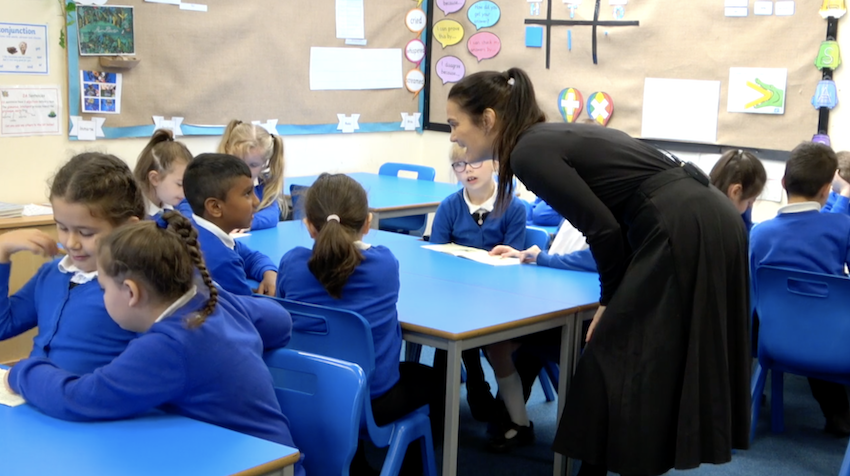Every time we ask a “hands up” question, we exclude the four-fifths of the class who don’t put up their hands. And if six raise their hands and we choose only one to answer then we exclude five more. It’s an unintended consequence, of course, but it goes some way towards explaining why so many children get to “sleep” through lessons, letting others take the strain.
Many schools have banned hands-up but most continue with the tried (and unproven) method against all the evidence that it harms concentration, disappoints and demoralises.
E.M. Forster asked: “How do I know what I think, until I see what I say?” How many times have fine, coherent arguments practised in your head come apart once you try to articulate them? Articulating a thought forces us to engage. It makes us organise what we know and what we don’t know.
It’s much easier teaching one child – we can get them to repeat what they have understood in their own words, step by step. Then, if they haven’t got it, we can try different words or approaches. With 30 children in a class, however, it’s much harder to replicate the back and forth dialogue that keeps a child totally engaged.
It’s not fair
Hands-up is a lose-lose situation. Who do you choose to answer the question?
The hands-up children who always know the answer? (It’s not fair, I never get picked.)?
The shy, the afraid to be wrong children who don’t raise their hands? (Please, please don’t pick on me.)
The polite children who put on an interested face, head down, slightly tilted?
The bored who keep their heads down?
The ones who raise their hands to pretend they know the answer? (And, if chosen – odds on they won’t be – they put on perplexed face and say they’ve forgotten what they were going to say!)
Or the ones who hadn’t noticed you’d asked a question?
Pull out the stick…
Some teachers put sticks in a pot with the children’s names on, and pull them out at random. This might be good for keeping children on tenterhooks – it’s so scary, who knows who will be chosen? It might be YOU next! But only one or two of the class get to articulate what they think they know.
Answer with a partner – after every question
If a question is worth asking it’s worth everyone answering. Pairing children with partners at the start of every lesson – ready for answering questions together – gets them to discuss the question and agree on an answer. They aren’t frightened to respond because the answer belongs to both of them and they will have practised it first.
The teacher has time to monitor how well the pairs are doing and can choose those with helpful answers to feed back. It saves humiliating the ones having difficulty and helps embed the right answer. We are all much more likely to remember a solution if we have first struggled to reach it ourselves.
“Hands up” questions are an impediment to learning and yet the technique is still widely used worldwide. So hands up all those who think it is time for a change.

